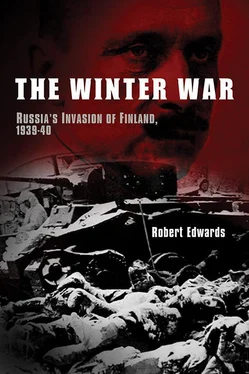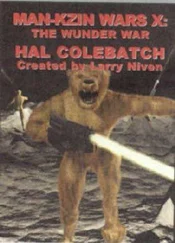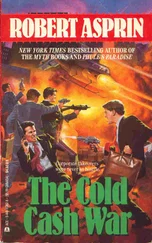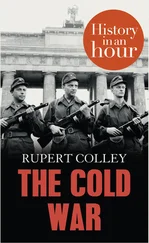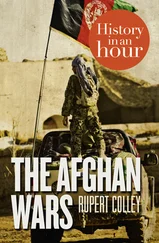We see a country where internally, under a façade of parliamentary democracy, a reactionary and indeed Fascist minority, with a long record of bitter hostility to the USSR, exercise the whole reality of power over a courageous and intelligent but oppressed minority [sic . [27] I think he meant majority, see D. N. Pritt, Must the War Spread? for a fuller text.
]; and in foreign relations, under a facade of independence, that same ruling minority accepts the position of a ‘client state,’ a colony, almost a military outpost, of Great Britain.
Once again, reactionary equals Fascist; the core assumption behind the Marxian analysis of its revolutionary rival is, of course, that Fascism must be the agency of the bourgeoisie, if only because Communism is the natural agency of the proletariat.
The response of the Comintern to this and other similarly frustrating matters was to take the gloves off with respect to Moscow’s relations with left-leaning movements globally. Class against Class, a policy introduced just in time to split the left completely against the rise of Fascism, was not a strategy with which all agreed outside the USSR, but hardliners such as Kuusinen and Dutt pressed the point that to cooperate with Social Democrats was now, formally, a Stalinist heresy; Moscow had said so.
The Comintern’s policy, triggered initially by the death of Lenin in 1924 and the resulting squabble for power within the Kremlin (the first casualty of which was Trotsky, expelled from the Politburo in 1926), proved with hindsight to be a disaster for the foreign policy of the Soviet Union. The three-cornered fight between Stalin, Kamenev and Zinoviev, which Stalin did not win until 1929 (and would not confirm until 1934, when he killed his old rivals), left the CPSU in a state of nervous collapse. Thus, in October 1929, when the capitalist West lurched into the greatest economic crisis of its history, the spectrum of the broadly left wing of world politics was, thanks to Moscow, splintered almost beyond repair. Into the vacuum stepped a much greater (and more organized) threat.
The rapid rise of the far right in opposition to accelerated agitprop took many forms. In much of Europe, the ranks of fellow-travelling Fascism (and, after 1933, Nazism) were filled by disillusioned alumni of the left, simply exchanging one workers’ movement for another. The response of the left to this was frequently chaotic and reeling, and the ‘Popular front’ concept, hastily cobbled together alliances of all parts of the left-of-centre spectrum, from Spartacist to Liberal, could not be expected to prosper, given the icy indifference of orthodox Stalinist activists to the belated efforts of sundry liberals responding, too late, to the new threat from the bomber right. In some cases, the renewed but uncoordinated vigour with which the broad left attempted to articulate its position on the general economic crisis served only to increase the ardour of the non-revolutionary, (merely reactionary) right, particularly in France and, to a lesser extent, Britain.
In Finland, matters were particularly sensitive; despite the minor economic miracle that had taken place by the early 1930s (at least, relative to other states), memories were still long enough to recall the horrors of the civil war and there was political (and social) tension at many levels. For the civil war (usually—and not inaccurately—referred to as the War of Liberation) had savagely depopulated the country, not only by direct conflict casualties, but also by deaths from influenza and starvation, execution and the further insidious effects of large-scale emigration of (particularly) Karelian Finns, mainly to America. [28] It has been estimated that up to 30,000 ‘Reds’ died in captivity in the spring of 1918.
Many of these ‘American Finns’ had in fact been lured back to the USSR just in time for the first of the Stalinist purges, signalled by the murder in Leningrad of Sergei Kirov in December 1934. Further, many (Arvo Tuominen’s account says ‘all’) of the Finns who had fled into the USSR after the war were rounded up and ‘suppressed’. [29] See Conquest, op. cit., p. 432.
Bar one, at least; Otto Kuusinen, the ultimate survivor, happily acquiesced in the wholesale slaughter and imprisonment of his countrymen with apparent enthusiasm.
Kuusinen was not the only prominent non-Russian active in the USSR during that period, but in common with many other hard-line Bolsheviks, he viewed the importance of the Soviet project (disastrous though it was proving) in essentially international terms. The Soviet Union was merely ‘the base’ (in Arabic, al Qa’eda) for world revolution, but he was Finn enough, and parochial enough, to imagine that his native country was an obvious target. Further, his lack of pity reflects a characteristic which we see again throughout history, that an undertaking (in this case the Finnish revolution of 1918) having failed, then the citizens of Finland did not deserve his sympathy. Perhaps the purges of the 1930s in the USSR were as a result of a similar sentiment on the part of Stalin—certainly the domestic condition of the USSR was not suggestive of a successful outcome to the project. To Kuusinen, the opportunity to foment revolution was partly a matter of policy and partly a matter of revenge. But, intelligence—information—is everything.
The core of the right wing in Finland lay in the Civil Guard, [30] Variously known as the Civil Guard, the Civic Guard, the White Guards and, by the far left, the Schutzcorps, to create linkage, inaccurately, with the Schutzstaffel— SS—in Germany. It was, of course, nothing of the sort.
which had started life as the cadre of White Guard militia that had come into being in 1905 and which had formed the core of Mannerheim’s civil war force, when leavened with returning volunteers from both the Tsar’s and the Kaiser’s army. Twenty years on, it had, as an organization, survived more or less intact in spirit, and in civilian life, represented essentially a middle-class interest of teachers, lawyers, yeoman farmers and industrial and commercial managers. By now, it had a female equivalent, the Lotta Svärd [31] Named, apparently at Mannerheim’s suggestion, after the wife of a soldier in Runeberg’s epic poem.
organization which, in time of war, would take over a host of military functions: medical, clerical, transport driving, anti-aircraft spotting and, it transpires, combat and logistics being only a few of them.
The Lottas were, therefore, something rather more than a Women’s Institute, although that is how they had initially been envisaged in 1919. Twenty years later, they were uniformed and badged and, importantly, over 80,000 strong. They would prove vital, releasing scarce soldiers for active duty elsewhere, but at the same time allowing an element of ‘class war’ into the analysis of the coming conflict, at least on the part of Finland’s critics.
At this point, after Yartsev appeared to have reached the limit of his remit, the Finnish Cabinet chose to offer a gesture, as much as an act of good faith as anything else. On 11 August, Tanner, standing in for Holsti, submitted to Yartsev a written draft for a treaty, which the Finns would find acceptable. Part of it read:
The Government of Finland, which adheres to Scandinavian neutrality, will not permit any violation of the territorial integrity of Finland and will therefore not allow any foreign power to use Finland as a base of aggression against the Soviet Union. The Soviet Government, which undertakes to respect the inviolability of Finnish territory in regard to every part of the country, does not object to Finland’s taking, even in peace time, such military measures as are required for ensuring to the fullest possible degree the inviolability of Finnish territory and the neutrality of the Åland Islands.
Читать дальше
